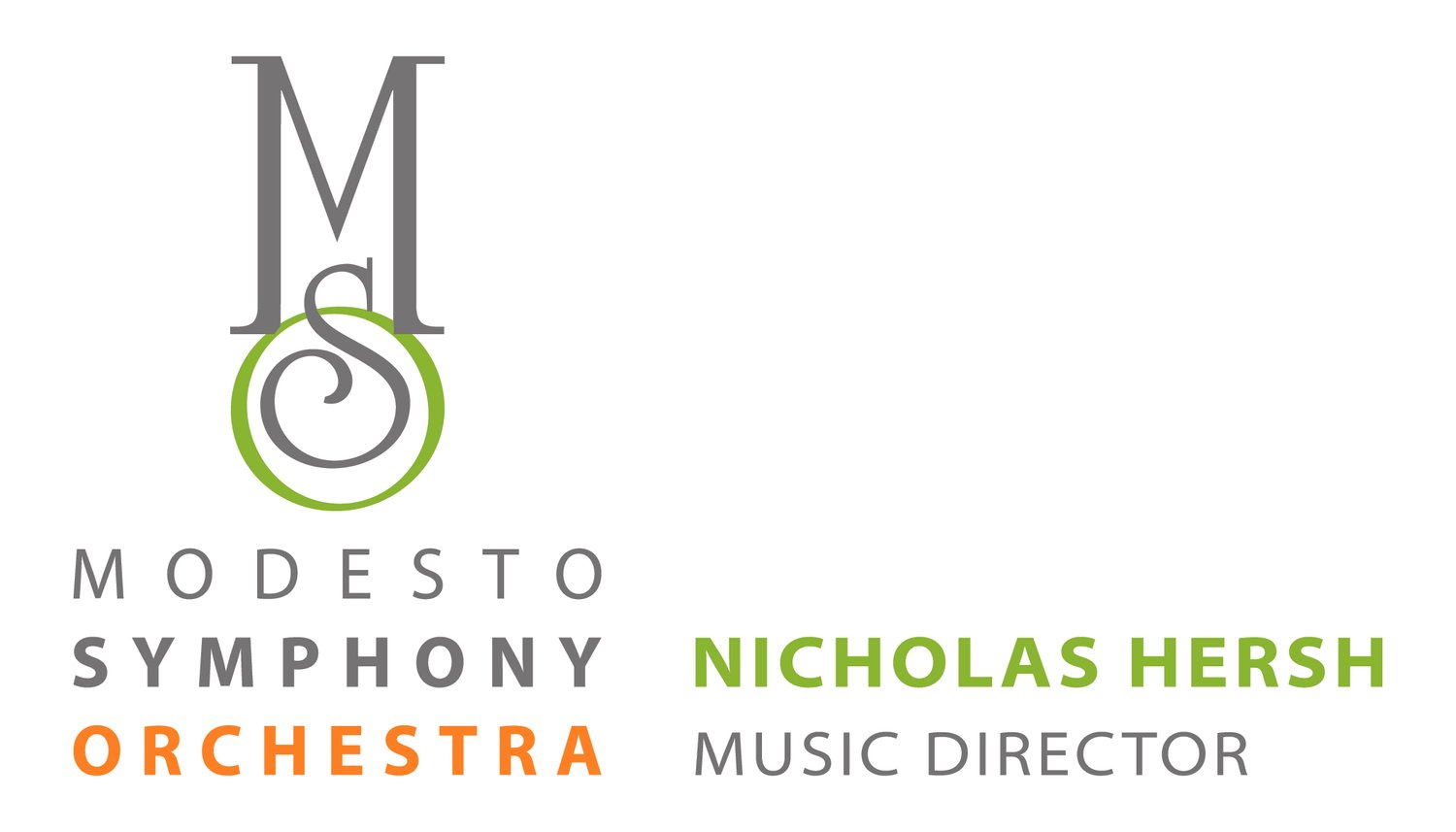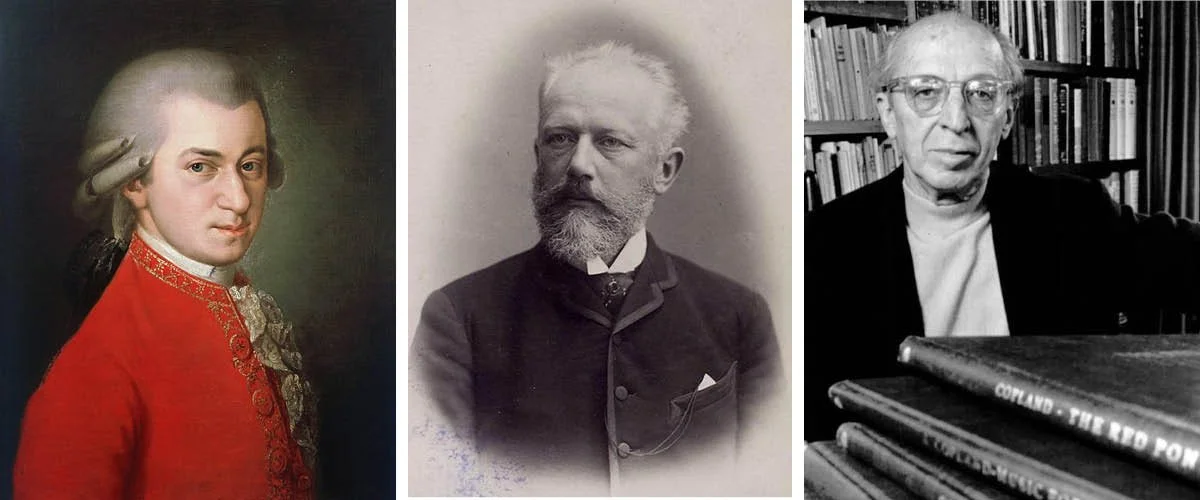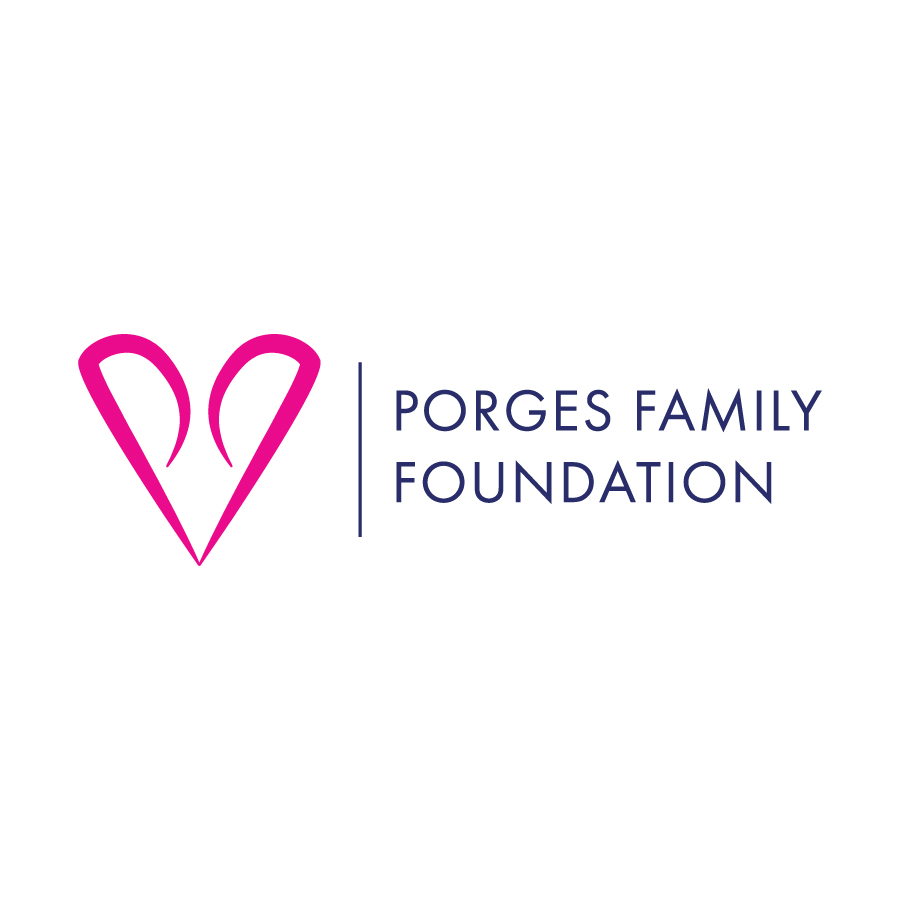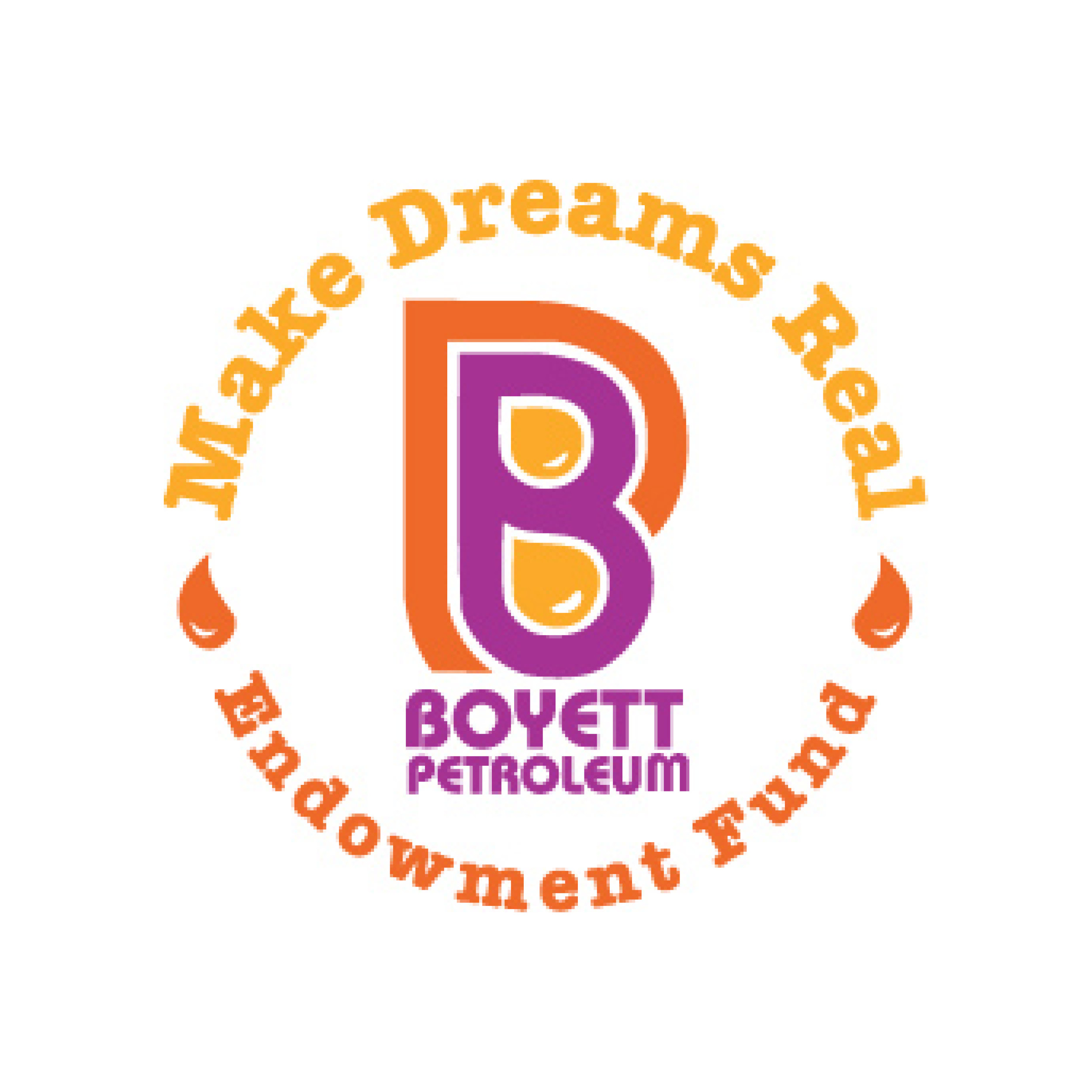Program Notes for october 13 & 14, 2023
Tchaikovsky & Copland
Wolfgang Amadeus Mozart
Overture from Le nozze di Figaro, K. 492
Composer: born January 27, 1756, Salzburg, Austria; died December 5, 1791, Vienna
Work composed: May 28, 1786.
World premiere: Mozart conducted the first performance of Figaro at Vienna’s Burgtheater on May 1, 1786
Instrumentation: 2 flutes, 2 oboes, 2 clarinets, 2 bassoons, 2 horns, 2 trumpets, timpani, and strings
Estimated duration: 4 minutes
The best way to generate interest in something is to ban it. This holds as true today as it did in 1782, when King Louis XIV, after attending a private reading of a French comedy of manners written by Pierre Beaumarchais, declared it “detestable.” Beaumarchais’ play contained revolutionary ideas too dangerous for commoners to hear, as far as the rulers of Europe was concerned. Austria’s Emperor Joseph II agreed, and banned Beaumarchais’ play within Austria’s borders.
When Wolfgang Amadeus Mozart encountered Beaumarchais’ subversive play, he saw in it the perfect basis for an opera. With librettist Lorenzo da Ponte, Mozart relocated the story of Figaro, Susanna, Count Almaviva and Countess Rosina, and all their circle to Italy, and toned down the more obvious revolutionary elements.
The dizzyingly intricate plot of Le nozze di Figaro, Mozart’s most popular and frequently staged opera, is rife with twists, turns, reversals, misunderstandings, rumors, gossip, and deceptions. Such narrative complexity is mirrored in the Overture’s series of running notes, which generate the nonstop high energy needed to keep the story going over four acts. As was common at the time, none of the actual music in the opera appears in the Overture, but the anticipatory excitement of the music readies the audience for all the shenanigans to come.
Piotr ilyich tchaikovsky
Piano Concerto No.1 in B-flat minor, Op. 23
Composer: born May 7, 1840, Kamsko-Votinsk, Vitaka province, Russia; died November 6, 1893, St. Petersburg
Work composed: Tchaikovsky began composing his first piano concerto in November 1874 and finished it in February, 1875. He revised it in the summer of 1879 and again in December 1888; this final revision is the one usually performed. Tchaikovsky originally dedicated the concerto to his mentor Nicolai Rubinstein, but after Rubinstein declared it unplayable, Tchaikovsky removed his mentor’s name from the manuscript and dedicated it to pianist and conductor Hans von Bülow.
World premiere: Valter Poole led the Michigan WPA Symphony Orchestra (aka the Detroit Civic Symphony) on November 6, 1940
Instrumentation: solo piano, 2 flutes, 2 oboes, 2 clarinets, 2 bassoons, 4 horns, 2 trumpets, 3 trombones, timpani, and strings.
Estimated duration: 33 minutes
The first measures of Piotr Ilyich Tchaikovsky’s Piano Concerto No. 1 have assumed an identity all their own. Many people recognize the four-note descending horn theme and the iconic crashing chords of the pianist’s first entrance without knowing the work as a whole. Interestingly, this signature introduction to the Piano Concerto No. 1 is just that, an introduction; after approximately 100 measures it disappears and never returns. These opening bars have also become part of popular culture, as the theme to Orson Welles’ Mercury Theatre radio programs; in the 1971 cult film Harold and Maude; and in a Monty Python sketch.
Although the rest of the concerto is equally compelling, that was not the initial opinion of Tchaikovsky’s friend and mentor, Nikolai Rubinstein. Rubinstein, director of the Moscow Conservatory, had premiered many of Tchaikovsky’s works, including Romeo and Juliet. Tchaikovsky considered Rubinstein “the greatest pianist in Moscow,” and wanted Rubinstein’s help regarding the technical aspects of the solo piano part. In a letter to his patron Nadezhda von Meck, Tchaikovsky described his now-infamous meeting with Rubinstein on Christmas Eve, 1874: “I played the first movement. Not a single word, not a single comment!” After Tchaikovsky finished, as he explained to Mme. von Meck, “A torrent poured from Nikolai Gregorievich’s mouth … My concerto, it turned out, was worthless and unplayable – passages so fragmented, so clumsy, so badly written as to be beyond rescue – the music itself was bad, vulgar – only two or three pages were worth preserving – the rest must be thrown out or completely rewritten.”
It is true that this concerto is awkwardly constructed in places, with some abrupt musical transitions. The writing for the soloist is often exceedingly difficult, because Tchaikovsky was not a pianist and did not possess a player’s kinetic, idiomatic knowledge. However, Rubinstein’s excessively negative reaction seems disproportionate.
After the majestic introduction, which anticipates the harmonic language of the following movements, the Andante non troppo continues with a theme Tchaikovsky borrowed from a Ukrainian folk song. Woodwinds introduce a second theme, gentler and quieter, later echoed by the piano. The movement ends with a huge cadenza featuring a display of virtuoso solo fireworks.
In the Andantino semplice, Tchaikovsky also features a borrowed melody, “Il faut s'amuser, danser et rire” (You must enjoy yourself by dancing and laughing) from the French cabaret. Tchaikovsky likely meant this tune as a wistful tribute to the soprano Désirée Artôt, with whom he had been in love a few years previously. (In another musical compliment, Tchaikovsky used the letters of her name as the opening notes of a melody from the first movement).
The galloping melody of the Allegro con fuoco, another Ukrainian folk song, suggests a troika of horses racing over the steppes. A rhapsodic theme in the strings recalls the lush texture of the introduction. The two melodies alternate and overlap, dancing toward a monumental coda.
Aaron Copland
Symphony No. 3
Composer: born November 14, 1900, Brooklyn, NY; died December 2, 1990, North Tarrytown, NY
Work composed: 1944-46. Copland’s Third Symphony was commissioned by the Koussevitzky Foundation and Copland dedicated it “to the memory of my good friend, Natalie Koussevitzky.”
World premiere: Serge Koussevitzky led the Boston Symphony Orchestra on October 18, 1946.
Instrumentation: piccolo, 3 flutes (one doubling 2nd piccolo), 3 oboes (one doubling English horn), 2 clarinets, E-flat clarinet, bass clarinet, 2 bassoons, contrabassoon, 4 horns, 4 trumpets, 3 trombones, tuba, timpani, anvil, bass drum, chimes, claves, cymbals, glockenspiel, ratchet, slapstick, snare drum, suspended cymbal, tam tam, tenor drum, triangle, wood block, xylophone, celeste, piano, 2 harps, and strings.
Estimated duration: 38 minutes
In 1922, Nadia Boulanger, who taught composition to many of the 20th century’s greatest composers, introduced conductor Serge Koussevitzky to one of her young American students. From that moment, Koussevitzky and Aaron Copland forged a reciprocal collaboration that lasted until Koussevitzky’s death, in 1951. Koussevitzky championed Copland’s music and taught him the nuances of conducting; in turn, Copland encouraged Koussevitzky to focus on American composers, particularly at the Berkshire Music Center (now the Tanglewood Music center), which Koussevitzky established in 1940 in Lenox, MA.
In 1944, Copland received his last commission from Koussevitzky’s Foundation; this evolved into his most substantial orchestral work, the Third Symphony. Copland explained, “I knew exactly the kind of music he [Koussevitzky] enjoyed conducting and the sentiments he brought to it, and I knew the sound of his orchestra, so I had every reason to do my darndest to write a symphony in the grand manner.”
In his autobiography, Copland wrote, “If I forced myself, I could invent an ideological basis for the Third Symphony. But if I did, I’d be bluffing – or at any rate, adding something ex post facto, something that might or might not be true but that played no role at the moment of creation.” Nonetheless, one cannot help hearing Copland’s Third Symphony as the expression of a country emerging victorious from a devastating war. Copland acknowledged as much, noting that the Third Symphony “intended to reflect the euphoric spirit of the country at the time.”
Copland described the Molto moderato as “open and expansive.” Of particular note is the second theme, a singing melody for violas and oboes, which sounds like an inspirational moment from a film score.
The Andantino quasi allegretto contains the most abstract and introspective music in the symphony. High strings wander through an empty landscape, like soldiers stumbling upon a field after a bloody battle. A solo flute intones a melody that binds the rest of the movement together with, as Copland explains, “quiet singing nostalgia, then faster and heavier – almost dance-like; then more childlike and naïve, and finally more vigorous and forthright.” As the third movement’s various themes weave and coalesce, sounding much like sections of Copland’s ballet music, they produce a half-conscious sense of déjà vu – have we heard this before? Not quite, but almost, and as the third movement dissolves without pause into the final movement, we hear the woodwinds repeating a theme present in all three of the preceding sections. Now the theme shifts, the last jigsaw puzzle piece locks into place, and the Fanfare for the Common Man emerges.
Although the Fanfare is instantly recognizable today, at the time Copland was writing the Third Symphony it was little known. In 1942, Eugene Goossens, music director of the Cincinnati Symphony, commissioned Copland and eighteen other composers to write short, patriotic fanfares, for the orchestra to premiere during their 1942-43 season. Copland explained his choice of title: “It was the common man, after all, who was doing all the dirty work in the war and the army. He deserved a fanfare.”
Copland wanted a heroic finale to represent the Allied victory in WWII, and the Fanfare epitomized it. The flutes and clarinets introduce the basic theme, before the brasses and percussion burst forth with the version most familiar to audiences.
Reviews were enthusiastic, ranging from Koussevitzky’s categorical statement that it was the finest American symphony ever written to Leonard Bernstein’s declaration, “The Symphony has become an American monument, like the Washington Monument or the Lincoln Memorial.”
© Elizabeth Schwartz
NOTE: These program notes are published here by the Modesto Symphony Orchestra for its patrons and other interested readers. Any other use is forbidden without specific permission from the author, who may be contacted at www.classicalmusicprogramnotes.com




















